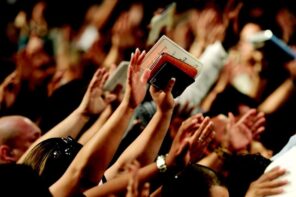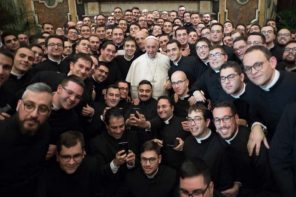The release of the massive American Religious Landscape Survey by the Pew Forum on Religion and Public Life this week provides a new window into an old question that has preoccupied sociologists for more than a century: Can religious traditions, with their particularity and ancient roots, survive amidst the pluralism of the modern world? The Pew Forum findings clearly cast an affirmative vote; Pew found that American religion is increasingly diverse, that most Americans have a non-exclusivist understanding of their religion (70% of the religiously-affiliated agree that many religions may lead to eternal life)—and that religion is alive and well under these conditions, with more than half of Americans continuing to say that religion is very important in their lives.
These findings cut against the grain of some of the dominant streams of sociological theory and recent public discourse. Sociologists have often tried to predict not whether, but how quickly religion might succumb to the alleged corrosive power of modern pluralism. More than a century ago, Karl Marx famously declared that religion’s last refuge was to be found in the sighs of oppressed workers as they toiled in the twilight years of a doomed capitalist system. And Max Weber lamented that amidst the tempest of competing value systems in the modern pluralistic world, trying to imitate the life of a religious exemplar like Moses, Jesus, or the Buddha was doomed for purely practical reasons.
More recently, secularization theorists have believed the tumultuous atmosphere of the 1960s would finally kill off traditional religions. They too were convinced that the coexistence of so many competing belief systems in the same social space would ultimately prove destabilizing to all of them.
But despite the predictions, religion would not go quietly into that good night. By the 1980s, most of the world experienced a resurgence of public religion, especially in literalist/fundamentalist forms that were explicitly anti-modern (and importantly, in many parts of the world, anti-colonial). Religious extremists across traditions hit the headlines so forcefully and often violently that they became the public face of religion through the 1990s.
Faced with insurmountable data, chastened theorists now allow for two tracks for modern religion: secularization/decline on the one hand or anti-modern retrenchment on the other. These basic assumptions have driven much of the contemporary public discourse about religion, from Samuel Huntington’s vision of a future marked by a “clash of civilizations” organized around monolithic religious identities to the more recent declarations by Christopher Hitchens and other neo-atheists that “religion poisons everything.”
But the recent Pew data, and my own findings from three years of research among progressive American religious leaders in Christianity, Judaism, Islam, and Buddhism, demonstrate that decline and retrenchment are not the only options. A new public face of religion is emerging.
The leaders of this emerging movement are deeply connected to their own traditions, but they do not see this connection as an obstacle to respectful engagement and coexistence with people of other faiths. Eboo Patel, a Muslim leader who is Director of Interfaith Youth Core, articulated this new approach this way: “My hope is to articulate what I love about your tradition, and to teach you what you might love about mine, and to point to a space where we might work together to serve others. And in my mind, that’s the example of the Prophet Muhammad.”
Similarly, Diana Eck, director of Harvard’s Pluralism Project, helpfully summarized this new posture. She talked about the power of defining her own religion “not by its borders, but by its roots.” If religion over the last twenty years has been marked by decline and retrenchment, this new data indicates that one trait of the new public face of religion is what we might call a generous rootedness in tradition. And if these roots—as the Pew data suggest—do not hinder but actually strengthen Americans’ abilities to reach across religious borders to work together for the common good, these findings mark indeed a promising way forward for a country as religious and diverse as our own.




